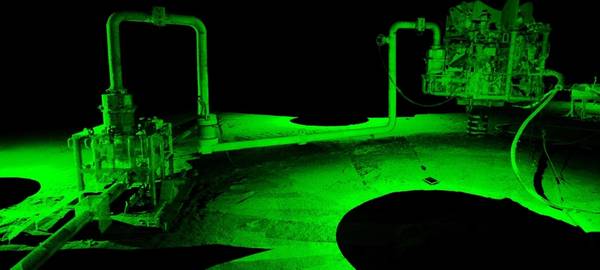
3D at Depth, a subsea LiDAR laser technology company said Tuesday it had received a new patent 11.249.193, "Systems and Methods for Monitoring Underwater Structures," from the U.S Patent and Trademark Office.
The patent's claims focus predominantly on leak detection and identifying changes to surfaces and volumes on and around underwater assets via the company's patented active optical measurement device, the company said.
"3D at Depth collects and processes four-dimensional data in line with client requirements, including millimetric three-dimensional data taken over time (fourth dimension). The same technique can be used for leak detection and making surface and volume measurements. This three-dimensional information can be compared to data collected at later points in time to help clients identify whether there's been a change in their underwater assets, including surface and volume, as well as absolute or relative spatial orientation changes to their underwater structures,"3D at Depth said.
"This 4D data empowers clients to make informed decisions on active or retired underwater assets. By condition monitoring assets over time and detecting changes with forward-looking failure projections, the variances can be addressed before they become issues. Monitoring the operational conditions of subsea assets during their planned life span can greatly contribute to the option of redeployment or field extension considerations," the company said.
Carl Embry, Chief Executive Officer, said: "This new patent covers systems and methods of monitoring the volume or surface of an underwater structure over time. Applications discussed for the subsea environment include monitoring of anode volume and depletion rates over time; seabed volume measurement for drill cutting, scour, or subsidence; and seabed cracks or deformations due to reservoir overpressure from well injection and stimulation."
This new patent also covers systems and methods for detecting leaks by taking precise scans of the areas around underwater structures.
"Applications discussed for the subsea environment include detection of liquid hydrocarbons, gas hydrocarbons, drilling fluid, glycol, hydraulic fluid, or other types of fluid used to operate and test subsea infrastructure," the company said.